CASE STUDY 1 - ELECTRICAL
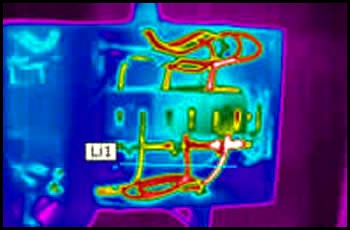
Our client required
a thermal survey to comply with insurance policy
changes. We completed the entire survey in one
morning with minimal disruption. The report was
completed that afternoon and his report, highlighting
overloaded components, out of phase power supplies
and poor connections, was on his desk the next
morning. Not only did this meet his insuarnce policy
requirements but allowed him to plan a maintenance
schedule keeping shut down time to a minimum.

CASE
STUDY 2 - ENERGY EFFICIENT ASSESSMENT
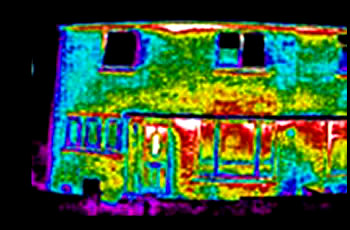
Infrared thermography
is the perfect tool for assessing energy efficiency & provides
visual evidence of poor insulation.

CASE
STUDY 3 - FLAT ROOFING
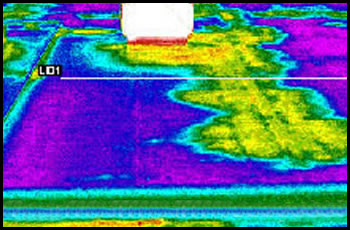
Our client was
undecided whether to strip or overlay his customers
1500m² flat roof. A roofing contractor had
informed him that it showed considerable moisture
ingress below the waterproofing and recommended
a complete strip and re-lay. Unconvinced of this
information he commissioned WCTI for a thermographic
survey which revealed moisture ingress in only
isolated areas equivalent to 26m². These areas
were successfully stripped and re-laid saving our
client $76,000 on phase I alone.
Our thermographic
surveys can detect trapped moisture below waterproofing,
damaged/missing insulation, hidden structural features
and many other thermal anomalies.

CASE
STUDY 4 - INSULATION ANALYSIS
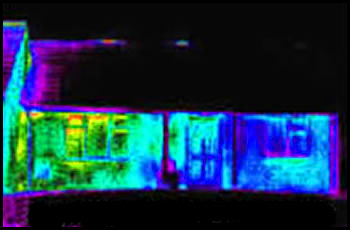
In this example
we surveyed mulitple homes using infrared thermography
to asses the condition of the cavity fill insulation.The
survey took one day on site with no disturbance
to the occupants. All internal heat sources and
room layouts were taken into account during analysis
and confirmed that 60% of the homes required attention.
Our re-test then
proved that the work had been carried out satisfactorly.

CASE
STUDY 5 - POROUS BRICKWORK
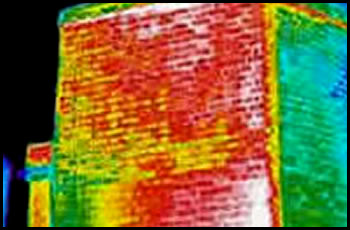
Infrared thermography
can detect porous brickwork quickly and inexpensively
with just one image. Because you have a graphic
record of the areas effected you can put together
a detailed program of repairs.
Entire buildings
can be assessed before and after repairs, ensuring
all works have been carried out correctly.

CASE
STUDY 6 - VOIDING WITHIN WALLS
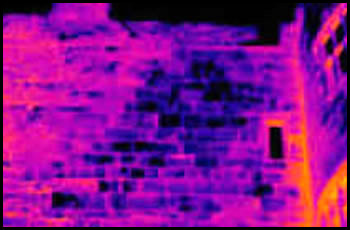
Infrared thermography
and ground penetrating radar are ideal for locating
voids within structures. Traditional methods involve
time consuming destructive techniques. These methods
are not always possible when analysing historic
and listed buildings.
Using thermal images
we are able to pinpoint the locations of the wall
voids, reinforcements and other hidden structural
features. |

![]()






